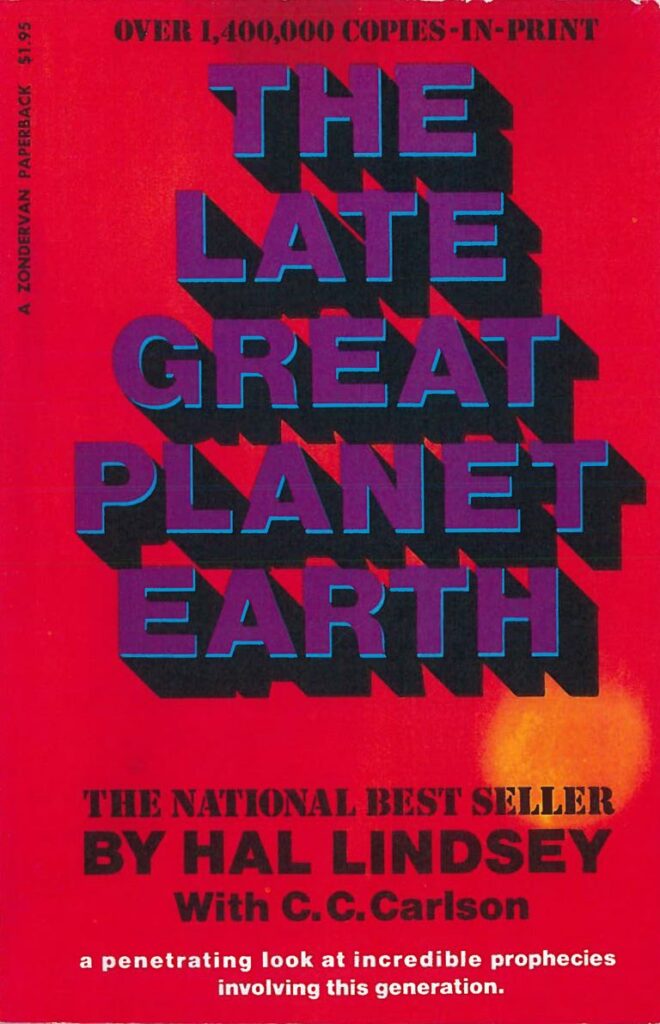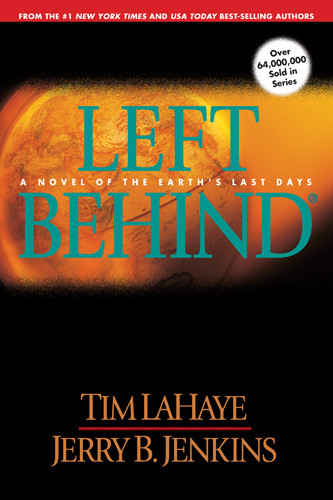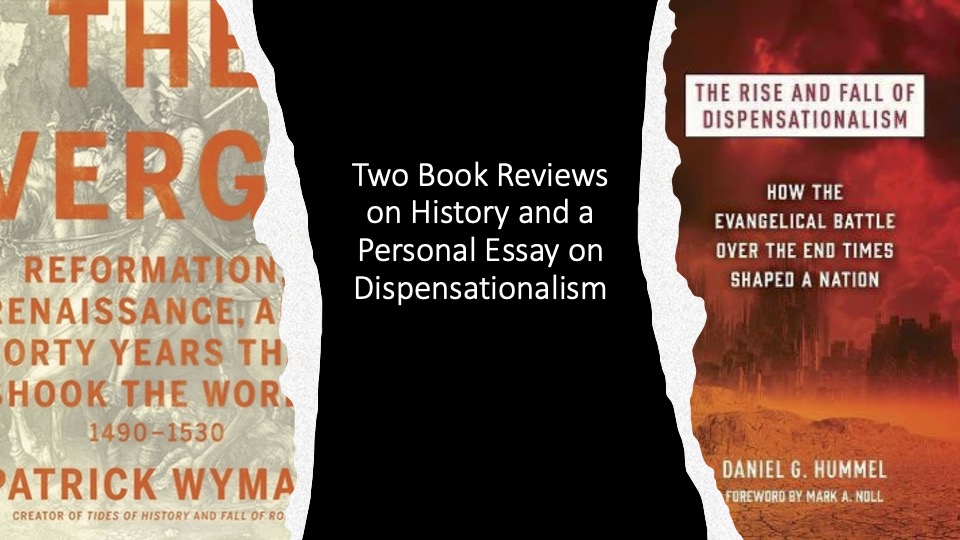Daniel G. Hummel, The Rise and Fall of Dispensationalism: How the Evangelical Battle Over the End Times Shaped a Nation

(Grand Rapids, MI: Eerdmans, 2023), 382 pages including a glossary, biographic essay, and index. The text includes a handful of charts and prints.
A broad definition: Dispensationalism is a belief that God works differently at different periods of time (dispensations) to reach humanity in different ages (dispensations). The doctrine rose from the teachings of John Nelson Darby in the 1830s, an Irish pastor who founded the Plymouth Brethren sect. However, the term Dispensationalism wasn’t coined until the 1930s. Dispensationalists believe we are nearing the final age and that before the end comes, the church will be raptured out of the world. When this happens, the world will enter a period of tribulation. The theology became more popular through the writings of Hal Lindsay and the “Left Behind” series.
My experience with dispensationalism

I read Hal Lindsay’s The Late Great Planet Earth in high school. While Lindsay didn’t provide a date for the world’s demise, he certainly hinted it would be in the 1980s (I graduated from high school in 1975). I felt we were living in the last days. But we’re still here! Things weren’t moving toward the end, just yet. I slowly understood that the future is not ours to know. Jesus makes this clear when he said no one knows the date or the hour of his return.
The concept of the rapture, which is behind such theology, seems far-fetched. The idea that God is going to yank the church out of the world before things go to hell in a handbasket (pretribulation premillennialism), saving the church from the horrors to come. This idea, which is rather recent in the history of the church, became even more problematic as I became more aware of suffering of Christians in the world. Such beliefs seemed just too comfortable for Christians in the Western World. But what does it say to Christians in the Sudan or Pakistan or North Korea or any of the other countries with persecution. The purpose of the rapture, according to most dispensationalists, is for God to give Israel one more chance at salvation.
Dispensational theology wasn’t a class I took in seminary. I have only one memory of a professor addressing it, Doug Hare, a New Testament scholar. Essentially, he said that if we don’t do proper exegesis on the text, and understand it from the culture it arose, it would be easy to create such fantasy interpretations of scripture.
In my own journey, dispensationalism was something that I felt I needed to study after I graduated from seminary. Part of this came from study of American religious history and reading George Marsden’s books on the history of fundamentalism and evangelism. Then I read Charles Ryrie’s Dispensationalism Today and John H. Gerstner’s Wrongly Dividing the Truth: A Critique of Dispensationalism.

By the time of the publications of the Left Behind series, I was convinced of the danger of such teachings and spoke about it. This caused me to lose a potential new member when I was in Utah. A man took offense at what I said about dispensationalism. I later learned he was a friend of Tim Lahaye, one of the authors of the Left Behind series. During this time, I started to write my own “dispensational parody novel.” My title, “Left Behind at Denny’s” seemed to capture the worse place I could think of being left at. . I only wrote a few pages before I decided it wasn’t worth my effort.
While I don’t accept dispensationalism and have often pointed to the Southern Presbyterian Church call of the movement as a heresy, I must give them credit for reminding us that Christ will return. Eschatology is important.
My review of Hummel’s book
While I had a broad concept as to what dispensationalism was about, Hummel’s work opened my eyes. It’s not a mono-cultural movement, but one with many diverse threads. While the movement’s beginning is related to John Nelson Darby, the Irish theologian in the 1830s, there are aspects (especially in America) that goes back further to a premillennialist view (Christ will return before the millennial) and to the Millerites (followers of William Miller, a Baptist pastor in the United States, who predicted Christ’s return in the 1840s). Blending into these threads are how the theology became adopted by different groups from mainline denominations, evangelicals, and Pentecostals. Hummel does an amazing job describing these various understandings of dispensationalism.
In the 19th Century, Darby made many trips to the United States. He found a receptive ear in the Great Lake region and with the evangelist Dwight Moody. This led to the first institution dedicated to the teaching, Moody Bible Institute. From the beginning, American dispensationalism differed from its British counterpart. Darby’s Brethren were separatists from the main Protestant bodies. In America, dispensationalists were at home in many denominations including Presbyterians, Baptists, Congregationalists, and to a lesser extent in Lutheran and Methodist traditions.
Dispensationalism had a regional component. At first, it was strongest in the northern and border states. Then, a separate group developed on the West Coast, with the organization of Biola (Bible Institute of Los Angeles). The movement was slow to take hold in the South, especially in the early years, but eventually did with the establishment of Dallas Theological Seminary, which became the hub of academic dispensationalism. Interestingly, dispensationalism was primarily a “white” Protestant phenomenon and failed to take deep roots within the African American churches.
The movement gained considerable support after the publication of the Scofield Reference Bible by Cyrus Scofield, a Congregational pastor from Texas. Scofield linked together passages in the Bible that supported dispensational teachings. His Bible was published by Oxford University Press. The popularity of his Bible allowed dispensationalism to influence those outside of their own circle.
While dispensationalist beliefs grew in the early decades of the 20th Century, there were critics. This was especially true among more conservative and even fundamentalist Protestants, especially those within the Reformed tradition. While these critics challenged dispensational hermeneutics, they were often on the same side with many of the social battles such as fighting against the teachings of Darwin or Communism.
Among all the many divisions within dispensationalism, Hummel divides dispensationalism into two broad eras. The dispensationalism of the first half of the 20th Century he labels Scholastic. Then, in the 60s and early 70s, with the publication of books like Hal Lindsey’s The Late Great Planet Earth, a more popular version of the movement rose. This popular version later gave rise to the Left Behind novels, which earned their authors a fortune and helped spread dispensational views. However, as dispensationalism became unmoored to its scholastic roots, it also began to decline as a movement, especially under the attack of groups such as the “new Calvinists.” Even Dallas Theological Seminary began to scale back its requirements for professors and students to affirm dispensationalism.
Dispensationalism had to change over time (when Christ had not yet returned to rapture the church). While most tended to hold to the teaching that the tribulation would be after the rapture, some suggested we are going through a “humanistic tribulation” that will precede the rapture. This allows them to explain the liberal shift in culture and why the church has not yet been raptured.
While Hummel does an excellent job tracing all these various threads of dispensationalism in America, he only briefly covers the role the theology had in “shaping a nation.”
Dispensationalists were involved in many of the social movements of the past half century, but often with others who were conservative in their theology. However, their biggest impact was toward our country’s support of Israel. Dispensationalists sees the state of Israel as the defining moment in history pointing to the end. Many believed there are two ways of salvation, through the free grace offered by Jesus through the church and through the Jewish faith who are still God’s people. On the positive side, such thought makes dispensationalism a ready critic of antisemitism. However, it also allows one to justify total support of Israel without questioning the nation’s policies. When you believe you are on God’s side, who can argue with you about the morality of your actions?
Another area where dispensationalism had an impact was the fear of the accumulation of power and one world government. To a dispensationalist, this was evidence of the approaching end, but it also allowed for many conspiracy theories to rise and find a home in churches teaching such doctrines.
The role of end-time beliefs in our government is dangerous. Not only is it no way to run a foreign policy (as with Israel), but it can also create other policy disasters. If you are sure the world is ending, why be concerned about the environment. After all, why not max out your credit cards? I hope Hummel’s research will continue to explore such issues.
Daniel Hummel grew up within the dispensational tradition. He currently works at Upper House, a Christian center located on the campus of the University of Wisconsin-Madison. His first book (which I haven’t read and may go deeper into the role the movement had on our foreign policy) is Covenant Brothers: Evangelicals, Jews, and U.S.-Israel Relations). I would recommend The Rise and Fall of Dispensationalism to those deeply interested in the history of American religion or who would like to understand dispensationalism more.
Patrick Wyman, The Verge: Reformation, Renaissance, and Forty Years that Shook the World

(Audible, 2021), read by the author, 11 hours and 33 minutes.
Wyman makes the case that the four decades from 1490 to 1530 set Europe (and the Americas) on the course to become the world’s center. Prior to these decades, no one would have bet on Europe. The Ottomans to the east, China, areas in India, and even some unknown kingdoms such as the Incas and Aztecs in the yet to be discovered Americas, all seemed to have superior cultures.
But that began to change in the 1490s. The not-yet united Spain repelled the last of the Muslim invaders who had occupied parts of the peninsula for centuries. Not only did Columbus sail to the Americas, but other explorers also sailed down the coast of Africa and on to India. This was soon followed by the Reformation, the defeat of the Ottoman armies at the gates of Vienna in Austria, and the establishment of larger European nation states. Several things gave rise to European power including credit, printing, and the advancement in the art of war. This was also a violent era and Wyman ends his story with the Holy Roman Empire under Charles V sacking Rome (which was one way to settle the debt owed to the soldiers).
I have read many books focusing on this period of history, but I can’t recall any of the books beginning with a detailed discussion of currency in use at the time. Most of my books focused foremost on the Reformation and perhaps the printing press. Wyman, however, spends much more time discussing finance and trade before he ever gets to Martin Luther. Credit becomes the means to expand the power of the state as well as to explore and to share ideas. Credit involves a trust that one will be repaid and can make a profit, which often led to the abuses of the era. When it came to being repaid, no one was overly concerned as to how the profit was made, whether from slave trade or plunder.
While Wyman concentrates on a few key leaders of the era (Christopher Columbus, Suleiman the Magnificent of the Ottomans, Charles V of Spain, and Martin Luther), he often tells his story through more common people such as a trader in England and a printer in Venice. Each chapter begins with what might be called “Creative Non-fiction” as he places the reader in the setting described, allowing us to experience first-hand what life was like in this era.
Having listened to this book, I am glad that the author was also the reader. As an experience podcaster, he made an excellent reader. I would recommend this book to anyone interested in this era of history and how the modern Western world came about.


I read Lindsey’s book about the time you did and was convinced the coming of Jesus was imminent! As my faith evolved, I became less impressionable. Your summary on dispensationalism is fascinating, as I am sure this book would be.
I read some of the Left Behind books, and like Kelly, read them as fiction and didn’t start packing for the rapture. After a while, they got pretty repetitive, and I stopped. You’re right, it made the authors a lot of money, and I don’t begrudge them that — that’s why professional writers write. I don’t know much about LaHaye, who died a few years ago, but Jerry Jenkins is a very talented writer. For a long time, he was the writer for the Gil Thorp comic series. His son Dallas is creator and producer for The Chosen series. (I’ve only seen season one, but I’m a big fan.) As usual for your posts, this was thought-provoking!
I’ve only read the first of the Left Behind books. I thought the reading level to be fairly low, but the story was intriguing and I felt a little sexualized. Was the married pilot going to sleep with the flight attendant? The book had a bit of sexual tension that, I’m ashamed to say, kept me engaged, but not engaged enough to read the next edition (but then I have never cared much about reading series).
Haha you’re right about the pilot and the flight attendant! It’s been so long I’ve forgotten most of the storyline/subplot.
Those books are a lot to absorb. I was a bit lost just at the word, ‘dispensationalism’. I thought I knew its meaning, but turned out I didn’t!
The problem with the word is that it means different things to different people, even people who consider themselves dispensationalists.
I read Lindsey’s book around the same time you did. I read and enjoyed the Left Behind books when they came out, but purely as fiction. (and they really started “milking” them towards the end) Both of these books sound interesting, but perhaps a little technical (dry?) for a layperson.
I do believe in the second coming… after all, I state that belief in the Nicene or Apostles creed each Sunday. I’ve just started a book that might interest you. Look up “Advent: The Once and Future Coming of Christ” by Fleming Rutledge.
Rutledge’s book is wonderful. I read it last Advent. All Christians believe in the second coming. As you say, it’s in the creed, but dispensationalists add to the event things like the rapture in which there is only one weak text (1 Thess 4:7) to support such view in scripture.
I just went back and (re)read your review of the Advent book. Now I remember how it ended up on my radar! Also, I finally read my copy of Brian Doyle’s essays you had in that review. It was wonderful and made me grieve his death all over again.
I have now read two of her books–I read her one on Holy Week and Easter during the season. I look forward to reading more of her writings and follow her on Twitter.